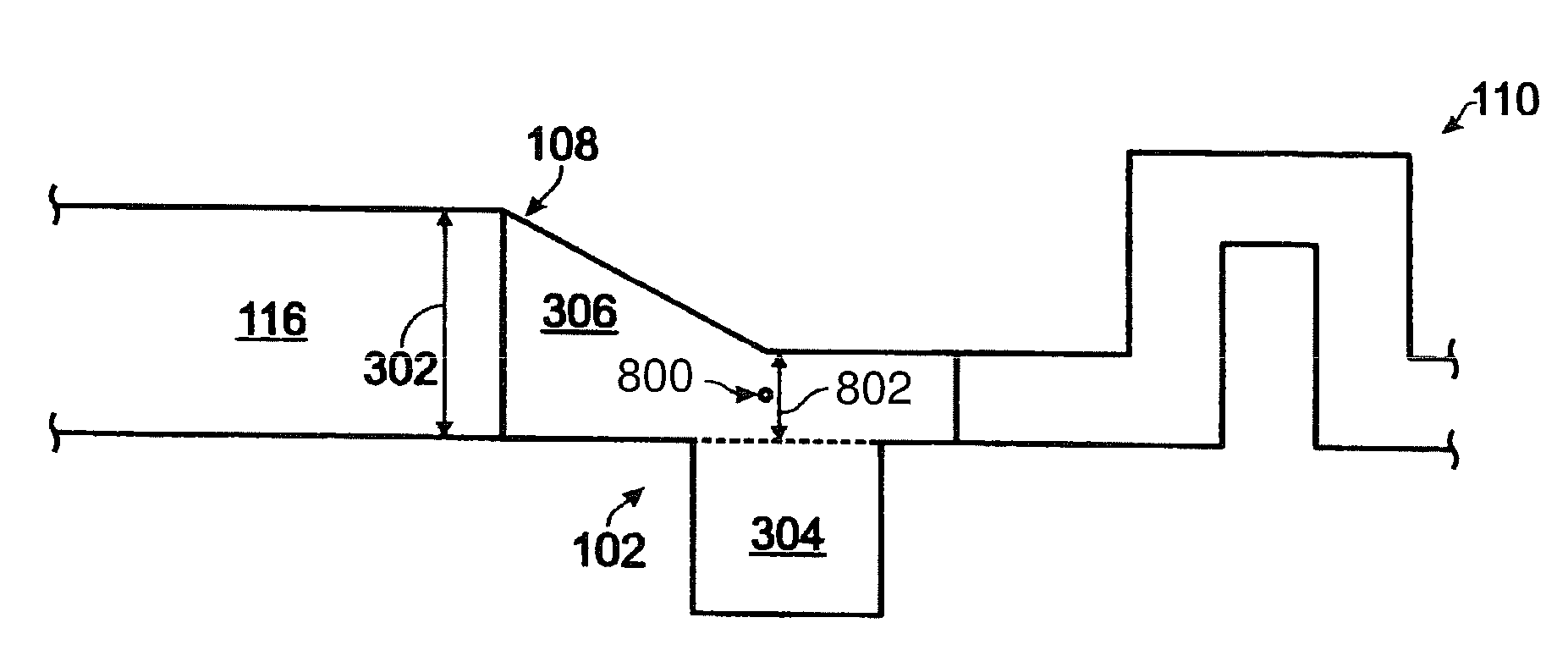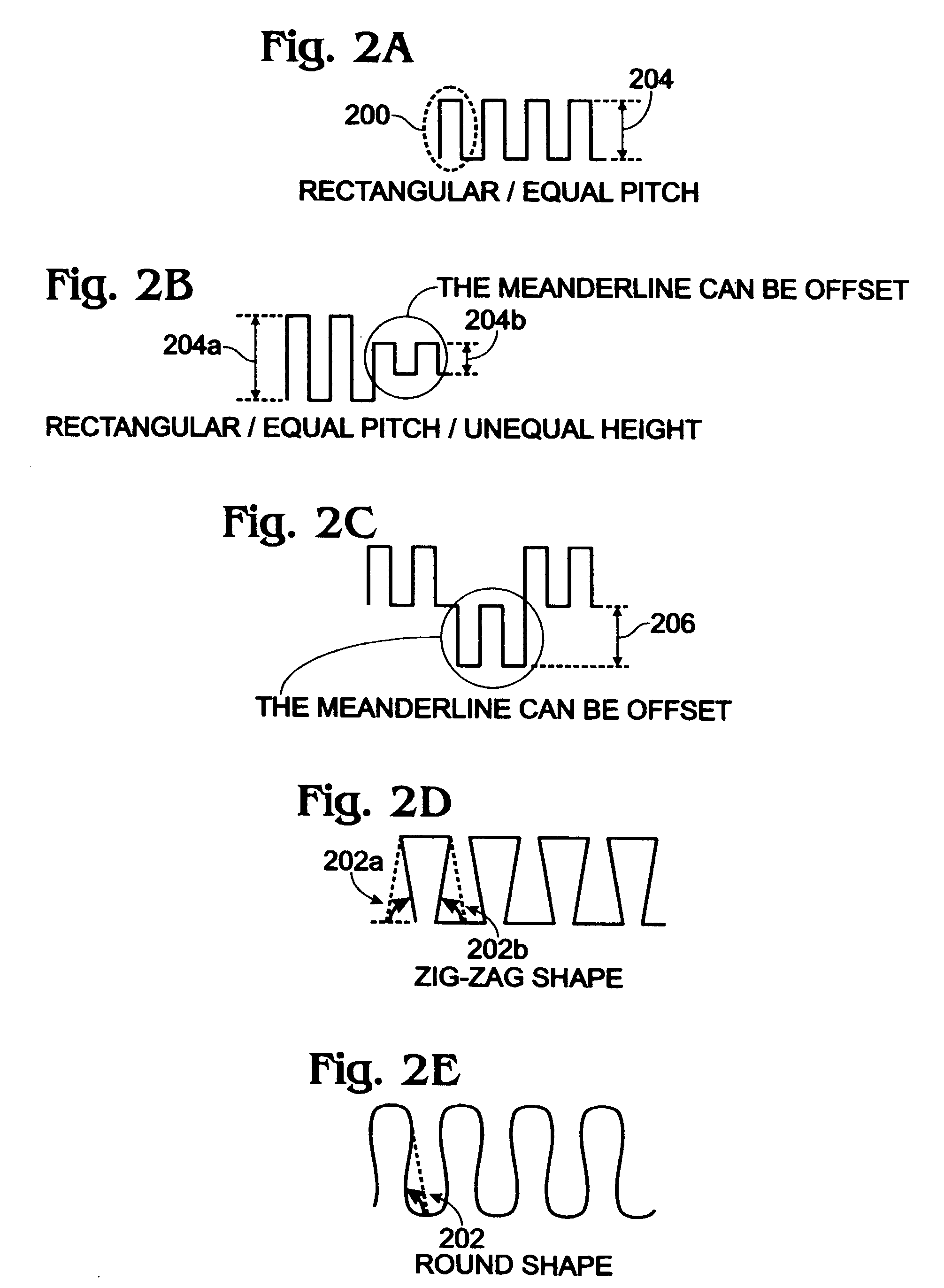Multiband monopole antenna with independent radiating elements
a radiating element and antenna technology, applied in the direction of radiating element structure, elongated active element feed, resonance antenna, etc., can solve the problems of multiple antenna feed points, inability to disassemble devices to swap antennas, and inability to meet the needs of users,
- Summary
- Abstract
- Description
- Claims
- Application Information
AI Technical Summary
Benefits of technology
Problems solved by technology
Method used
Image
Examples
Embodiment Construction
[0029]FIG. 1 is a plan view of a single-feedpoint multiband monopole antenna with independent radiator elements. The antenna 100 comprises a microstrip counterpoise coupler 102 having a single-feedpoint interface 104, a first radiator interface 106, and a second radiator interface 108. A first (right-angle) microstrip radiator 110 has an end 112 connected to the counterpoise coupler first radiator interface 106, and an unterminated end 114. The first microstrip radiator 110 is capable of resonating at a first center frequency. A second microstrip radiator 116 has an end 118 connected to the counterpoise coupler second radiator interface 108, and an unterminated end 120. The second microstrip radiator 116 is capable of resonating at a second center frequency, non-harmonically related to the first frequency. A groundplane 122 is also shown as co-planar. However, in other aspects not shown in this figure, the groundplane can underlie or overlie the radiators 110 / 116.
[0030]FIGS. 2A thro...
PUM
 Login to View More
Login to View More Abstract
Description
Claims
Application Information
 Login to View More
Login to View More - R&D
- Intellectual Property
- Life Sciences
- Materials
- Tech Scout
- Unparalleled Data Quality
- Higher Quality Content
- 60% Fewer Hallucinations
Browse by: Latest US Patents, China's latest patents, Technical Efficacy Thesaurus, Application Domain, Technology Topic, Popular Technical Reports.
© 2025 PatSnap. All rights reserved.Legal|Privacy policy|Modern Slavery Act Transparency Statement|Sitemap|About US| Contact US: help@patsnap.com



